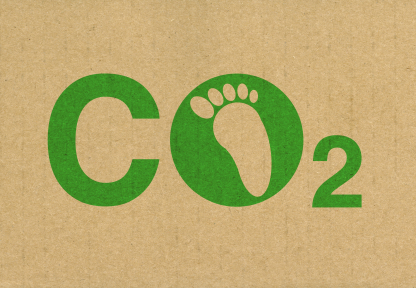The Environment: How green is self storage?

How self storage companies are combating Climate Change
Consumers these days are becoming increasingly aware of the environmental impacts their buying choices have. This means that a ‘green’ image has suddenly become very valuable ‒ hence the energy with which many companies are now busily pursuing one. This includes the major self storage firms, who, in the last few years, have all begun implementing schemes to minimise the impact of their products and activities on the environment.
Big Yellow turns green
The industry leader in the race for a green image has been Big Yellow, who have gone further than any of the other companies to rethink the way their stores are designed and constructed for the benefit of the environment. Now over 20% of Big Yellow’s building portfolio has been certified as energy efficient. Big Yellow has also tweaked the range of products it sells, for example making sure all its cardboard boxes are now 70-100% recycled, and that its plastic containers are 100% reused polypropylene.
However, the real flagship of Big Yellow’s green armada is its Bromley “Eco-Store”. This has been specifically designed to generate some of its own energy through solar panels on the roof, plus a ground source heat pump that absorbs heat from under the soil. Between them they save 10 tonnes of CO2 each year. This attitude also extends to the lighting arrangements, where special T5 fluorescent tubes have been installed that use 40% less energy than standard strip lights do. Further energy savings have been made by doing away with light switches and, instead, having motion sensors installed along all the corridors, so the lighting is only ever on in the parts of the building actually being used. As a final touch, flowerbeds have been planted around the outside of the building, simultaneously improving its aesthetic and creating a habitat for local insects, whilst also recycling the rainwater that runs off the concrete to prevent it simply clogging up the drains.
Safestore’s lifelong commitment
Safestore has not been far behind in its approach. Its focus has been on packaging, recognising the fact that operational storage units don’t have a very large carbon-footprint in the first place, as they often aren’t heated or lit. This has led them to instigate the ‘Box for Life’ scheme; it works by selling cardboard containers that are made entirely from recycled materials to begin with, and then replacing them free of charge once the customer has worn them out, so they can be recycled all over again. Reducing the amount of new cardboard that needs to be made plays its part ‒ however small ‒ in diminishing the demands on the world’s forests; and ultimately this helps to protect fragile rainforest eco-systems like Amazonia, where an area the size of Belgium is currently chopped down each year. Any trees that remain standing absorb carbon-dioxide from the atmosphere, and so lessen the severity of global warming.
Safestore is also the only major self storage firm to sell biodegradable Bubble Wrap. This helps the environment because it breaks down when put in a landfill site after disposal, unlike the traditional type that is made from ordinary plastic and will last forever. When buying Bubble Wrap it’s worth remembering that this is the case: plastics take centuries, or even millennia, to decompose, and every piece of the estimated billion tonnes of non-biodegradable plastic waste that have been produced since 1950 is still here on earth with us.
That means buying the very large rolls of Bubble Wrap most firms sell is bad for the environment when you only want to use a small amount as the leftovers are likely to end up being wasted. Big Yellow provides a good alternative to this as its Bubble Wrap can be purchased by the metre, meaning you needn’t buy any more than you actually need.
Access follows the sun
Access Self Storage has taken measures to make its power supply more environmentally friendly, particularly at its Byfleet store where photovoltaic panels have been fitted on the south-facing roof. They work by absorbing solar energy and using it to release electrons which are then converted into AC current, and their presence saves the company 7,000kg of CO2 emissions each year.
Big Yellow, Safestore and Access are leading the charge in pursuing this vital part of the CSR (corporate social responsibility) agenda. Given the potential for firms to save money through cheaper and more efficient forms of energy use, not to mention the development of carbon trading, it will be interesting to see how many other self storage companies likewise take up the challenge to help mitigate climate change – while we still can.
2 Responses to “The Environment: How green is self storage?”
Leave a Reply
Subscribe to This Blog
Get new blog posts sent to you by subscribing to RSS updates or to email updates.







[…] This post was mentioned on Twitter by Mary B, Storage.co.uk. Storage.co.uk said: How green is #selfstorage? Read our blog post here: http://bit.ly/dl66Kq […]
Big Yellow has an admirable Corporate Social Responsibility (CSR) policy which covers carbon footprint, hence the solar panels and wind turbines seen on a number of its newer facilities. Its website addressing CSR includes the statement, “Carbon reduction has benefited from our building portfolio progressively changing from refurbished to purpose built, well insulated stores. These buildings do not require heating and cooling in over 97% of their area. More than 30% of our portfolio has energy efficient design, lighting and lift specifications. Since 2007, onsite renewable energy generation through solar photovoltaic panels, wind turbines and ground source heat pumps reduces energy grid supply and carbon emissions by a further 10-20%.”